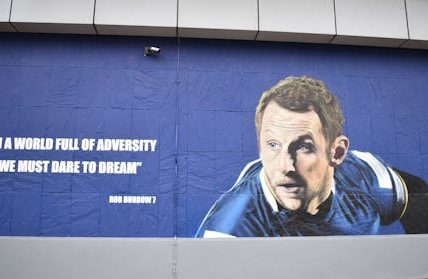Why do people riot?
Just over a year ago, riots swept across parts of the UK following the murder of three schoolgirls in Southport. In 2011, the police killing of Mark Duggan led to five nights of rioting that left five people dead. And in 1981, there were weeks of rioting in cities across the country in response to perceived police discrimination against black people.
In recent weeks, occasionally violent protests at asylum hotels around the country have seen a number of people arrested. Politicians have warned that further unrest is possible.
As a social psychologist specialising in the study of collective behaviour, I know the cliche that “any spark” can cause a riot is untrue. The significant incidents that lead to riots are not arbitrary. They are dramatic emblems of longstanding grievances for particular groups.
And rioting often only takes place days after such incidents, rather than being an immediate “trigger” for mass violence. Communities first discuss the incident and often try other means to achieve their goals.
There are a number of pre-conditions for riots to occur. Collective grievances, often linked with deprivation, are one of them. But not all deprived locations join in when there is a wave of riots.
In addition to grievance, another condition is the collective ability of people in the location to act upon the grievance. This relates to things like how organised people are in the location, what resources they have locally, and the number of people physically available to get involved.
As riots involve a large group of people acting as one, a shared social identity is another necessity. That is, participants must see themselves as an “us”. This sense of being part of an in-group (“us”) is defined in opposition to an out-group (“them”). The presence locally of out-groups seen by participants as linked to the grievance is an important factor in why riots happen where they do.
For example, in 1981 and 2011, poor community relations with police distinguished those locations that rioted from those that did not. In 2024, the out-group that defined the in-group was “asylum seekers and immigrants” in temporary accommodation.
Read more:
The hypocrisy at the heart of racist riots
Sometimes – albeit rarely – peaceful crowds turn into riots. My previous research with Stephen Reicher and Clifford Stott shows that how the police and the crowd interact with each other on the day is crucial in explaining this process.
This research – on student protests and anti-poll tax demonstrations as well as anti-roads direct activists and football supporters – identified a common pattern. In all cases, participants in the crowd saw themselves as acting legitimately, but felt that police were acting in illegitimate and even in dangerous ways towards them – for example threatening their right to protest. This therefore changed their views, legitimising action against police as self-defence or retribution.
At the same time, these participants also experienced the policing as indiscriminate, which enhanced a sense of shared identity in the crowd. This new sense of “we-ness” created the collective ability (support, empowerment) to act upon their new grievance against the police.
In a recent study of the 2024 anti-immigrant riots in three locations – Stoke-on-Trent, Bristol and Tamworth – my colleagues and I found a different pattern of crowd violence.
These were not, in the main, protests largely comprising people there simply to voice their concerns, who only became violent after policing interventions. Rather, there was clear evidence that many came to the events intending to physically attack asylum seekers and damage property associated with this out-group. Empowerment probably came from the rioters’ belief that enough other people felt the same way.
Social influence
One of the features of the wave of 2024, just like the waves of 1981 and 2011, is that riots influenced the likelihood of further riots in other towns. This process of social influence and spread can’t be explained by simple mechanisms like contagion.
Most people “exposed” do not join in. And for those who do, the actions they “join in” with in their local areas can be different from the actions of the rioting crowd in the source location.
Our research on multiple waves of riots suggests that rioting in one place prompts expectations and discussions among potential participants in other locations. These are about how their community, networks and peer groups might respond to the rioting in the source location.
Rather than simply mimicking those actions, potential participants are influenced by what they believe local groups relevant to them will do.
Why should people believe that others in their own area intend to riot locally in response to rioting elsewhere? One reason is they believe that enough other people, locally or in their networks and reference groups, have the same grievance as that in the source riot location.
They believe these views are widely shared locally, based on their area’s history, reputation, identity or local campaigns. For example, the presence of an active ongoing local campaign against the housing of asylum seekers in Tamworth contributed to local expectations that Tamworth would be part of the wave of riots in summer 2024.
Believing that “everyone” in one’s local network or neighbourhood will join in empowers people to take part even if there might be some personal risk – because they think they will not be alone.
The solution to events like those of summer 2024 is not only to correct misinformation about potential out-groups. It’s also necessary to challenge what they believe about other people’s beliefs. In an important way, the very large counter-demonstrations at the end of the 2024 wave may have achieved this.
If the anti-immigrant riots had continued unchallenged, observers (and supporters of the rioters) are likely to have drawn the conclusion that public opinion supports or is indifferent to violent attacks on minorities. The chilling effect on those who would otherwise be ready to speak out against racism should be obvious.
But by mobilising in large numbers, a counter-protest can demonstrate that it is anti-racism that is the mainstream, and that public opinion is closer to this view than those of the anti-immigrant rioters.
Want more politics coverage from academic experts? Every week, we bring you informed analysis of developments in government and fact check the claims being made.
Sign up for our weekly politics newsletter, delivered every Friday.
John Drury received funding from the Economic and Social Research Council (reference ES/N01068X/1). Some of the work described here was funded by the Behavioural Research UK Leadership Hub, which is supported by the Economic and Social Research Council (reference ES/Y001044/1).

